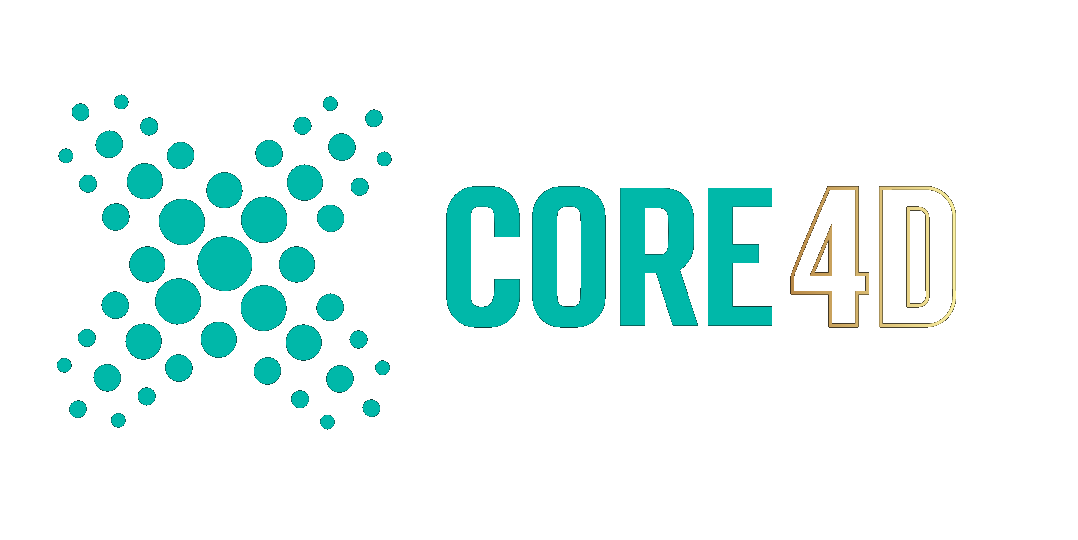Leaderboard
-
[[Template core/front/popular/memberRow is throwing an error. This theme may be out of date. Run the support tool in the AdminCP to restore the default theme.]]
-
-
Popular Content
Showing content with the highest reputation since 03/28/2025 in all areas
-
Maxon Unveils Game-Changing Cinema 4D 2025 Update: Enhanced Modeling, Texturing, and Scene Nodes March 31, 2025 – Los Angeles, CA – Maxon has officially announced the highly anticipated Cinema 4D 2025.1.4 update, promising groundbreaking new features that will redefine the 3D animation and motion graphics industry. This latest iteration of Cinema 4D introduces significant improvements to modeling, texturing, Scene Nodes, and animation workflows, ensuring a more seamless experience for artists. Official Statement from Maxon’s CEO “Cinema 4D 2025.1.4 is not just an update—it’s a revolution. We’ve listened to our users and implemented features that streamline workflows, accelerate creativity, and push the boundaries of what’s possible in 3D design. Our latest enhancements to modeling, texturing, and Scene Nodes will empower artists like never before.” — David McGavran, CEO of Maxon Key Features of Cinema 4D 2025.1.4: 🔹 Enhanced Parametric Modeling Tools – New and improved parametric objects offer greater control, including advanced spline editing and interactive beveling. 🔹 Advanced Scene Nodes 2.0 – A major update to Scene Nodes introduces a more intuitive interface, expanded procedural modeling options, and real-time performance boosts. 🔹 Improved UV Packing and Unwrapping – A completely reworked UV workflow includes automated packing, distortion minimization, and island grouping for better texturing efficiency. 🔹 Neural Render Engine (NRE) – Cinema 4D now features an AI-powered render engine that reduces render times by up to 90% while maintaining photorealistic quality. 🔹 Real-Time Path Tracing – A fully integrated real-time path tracer allows users to see near-final renders directly in the viewport. 🔹 Auto-Rigging AI – Character animation just got easier with an intelligent rigging system that auto-detects joints and optimizes weights instantly. 🔹 HoloC4D VR Integration – For the first time, users can sculpt, animate, and render in a fully immersive VR environment. 🔹 Redshift Cloud Render – A new cloud-based rendering system allows users to offload heavy render jobs and access high-performance GPU farms directly from Cinema 4D. 🔹 Deepfake MoGraph Generator – A new AI-assisted tool that generates realistic face animations from a single image input. 🔹 AI-Assisted Material Suggestion – The new AI-driven material engine suggests realistic textures and shader settings based on your scene context. Spline SDF Smooh blending of 2D splines. Outline Capsule Unlimited number of oulines with the new Outline Node and capsule Chamferer The new Chamferer generator brings non-destructive, parametric editing on individual spline control points Field Distribution Cloner Mode Fields can now be used to place children instances by mapping the hierarchy of the children to the intensity of the field. Release Date and Availability Cinema 4D 2025.1.4 will roll out as a free update for all Maxon One subscribers starting April 1, 2025. Perpetual license holders will have the option to upgrade at a discounted rate. For more details, visit www.maxon.net. Exclusive Interview with Maxon’s CEO, David McGavran Q: What was the main focus for Cinema 4D 2025.1.4? David McGavran: “Our primary goal was to refine and enhance the tools that artists use daily. We wanted to create a more intuitive and efficient experience, whether it's through procedural modeling, advanced texturing, or improved rendering. The new Scene Nodes 2.0 is a huge leap forward, allowing artists to build complex structures with ease.” Q: How does this update compare to previous ones? David McGavran: “While every update brings innovations, this one focuses on practical enhancements that improve workflow speed and creative flexibility. We've also made significant improvements to UV workflows, Boolean modeling, and dynamic simulations based on user feedback.” Q: Can you give us a sneak peek into the future of Cinema 4D? David McGavran: “Absolutely. We are already developing features for Cinema 4D 2026 that will push procedural modeling even further. Expect deeper Redshift integration, better scene organization tools, and an overhaul of particle simulations. We're also exploring more real-time collaboration features to make remote workflows even smoother.”4 points
-
Well.... I've asked (and still asking) for a Helix 2.0 with myltiple modes like Logarithmic. Archimedian and Double but primitives won't ever change in fear of compatibility break with older projects. But you could try it just on a Symmetry Object ...3 points
-
Fun facts: The text was AI generated. I did not expect a reference to the CEO by name. Later I asked for an interview. It wasn't an elaborate prompting at all, I asked three times all and all. I was clear of my intensions so it knew it was supposed to be an April Fools article. I asked for C4D screenshots for the next version... It kept drawing Blender elements on them. Curiously there's a repeating pattern that resembles a mix of the old logo of the Blue Pearl with the splash screen of R21 (see last two images) I removed the AI image from the article the next day just because it was too cursed... I later thought I could make the YT image to link to a Rick Roll video but it was too late. The Rocket Lasso image is a manipulated version of the S26 I asked for a new C4D logo but it refused, there must be a limit of 3 generated images per day I guess. The Chamferer icon is the CV-Chamfer icon. I designed the Spline SFD icon by templating the Spline Mask icon. I planned this prank 4 days in advance. Spline SFD, Chamferer, Outliner and Field Distribution are all real but not as versatile to construct as they are presented. I did not expect the Spline SFD to be that fast in viewport. The Field Distribution was the most time consuming as I had to construct an XPresso rig to manipulate 4 coencentric Torus Fields from the radius of the visible Spherical Field... real pain in the a$$ and didn't manage to link the Inner Offset to the radius of the inner most Torus to make it more believable. Fortunately I didn't have to spend extra time to recreate the UI of the Cloner as I had already done this a week earlier as a future sugggestion for MAXON.2 points
-
1 point
-
I started in on the OpenPBR material with the new Redshift. I was surprised to see it in there till I saw that Autodesk also included it in Arnold this last release as well. The future is now... OpenPBR. Saul Espinosa says it's the only shader he uses now (RS + Houdini). Subsequently, I just sent a ticket to maxon to have it included in the default material dropdown.1 point
-
There are some very interesting new features. Particles have an extensive list of new functionalities from which the following stand out. The Field-driven density distribution of particles is highly appreciated along with in-built noise shaders for both distribution and emission. Density control shaders and Fields is something I've been asking for MoGraph for years. Finally it can be achieved through particles. Noise Sampling for Color and Data Mapper https://help.maxon.net/c4d/en-us/Content/Resources/Images/2025-2_Particles_NoiseSampling_01.mp4 https://help.maxon.net/c4d/en-us/Content/Resources/Images/2025-2_Particles_NoiseSampling_02.mp4 Neighbor Search algorithm for Flock, Predator Prey and Blending Similar to the geometry density coloring effect I've been asking. Some Scene Node Capsules are now directly available with other primitives from drop-down menus. This was something I was actively arguing about from early versions of Scene Nodes as it was a closely UX-related issue. Things were pointing to parallel ecosystems of the same tools being developed under the same application or tools that were not that easily accessible that would inevitably lead to confusion or frustration among new and old users. It wasn't too long ago you could finally make capsules accessible from custom pallets but that required from users to know how to do that and as SceneNodes was so actively characterized as experimental or system for advanced users, people would prefer staying away from it missing some key features that were not that hard to use after all. Personally I extend my custom Layout with capsules supported by the OM every new version. Now the Line Spline is available along with the Break Spline, Branch Spline (which is an easier MoSpline Turtle), Catenary Spline, Dash Spline, Electric Spline, Partition and Pulse Spline. What I don't know is if they re-developed those tools in C++ or if they are just links to the node implementation with modernized icons to fit with the rest of UI. Well, there are still some argument about what should be characterized as a Generator what as a Modifier and what as a Deformer... For example the Branch Spline is more fitted to the Generators club as it does create additional splines on top of the original but I guess they run out of ideas on how to represent it with a new icon to avoid confusion with the MoSpline... Which leads to other old arrangement arguments like why don't we just have new features part of older tools as modes... For example the Branch Spline as Mode of the MoSpline... Break, Dash, Partition and Pulse modes of a single spline deformer/modifier or Wrap, Shrink Wrap and Spherify as modes of a single deformer... Looking forward to seeing all distribution nodes as modes in the Cloner and Blue Noise as a mode of the Push Apart Effector. New mode for the Look at Camera expression I always thought this to be an old remnant from earlier C4D versions... I never used it because I achieved the exact same effect using the Target tag... I still don't know what the difference between them is... Some unfortunate translation issues: Weird title, not available in English (fixed the next day) https://help.maxon.net/c4d/en-us/Default.htm#html/OFPBLEND-FP_BLEND_OBJECT_OUTPUT.html MAXON ONE capsules are not documented... Bad marketing as other users don't know what they are missing Things that we saw in the teaser video but they are not documented (yet) Weave Spline Generator (also expected a better icon for that, here's mine ) Constellation Generator (Plexus effect) Liquid Simulator (yeah... the thing that should be teased the most was not)1 point
-
There are, if we look carefully, a number of things subtly wrong with the settings in this scene. As HP predicts above, Render Perfect on the sphere is one of them, and fixes the effect of collision deformer not showing in render if we turn that off. Next we had some suspect settings in the sweep object (parallel movement should be off, Banking should be ON, and End Rotation should be 0 degrees), which fixes the twist in your path spline over the indent, and restores it to correct, contiguous circular form all the way along its length... The mode of the Collision Deformer should be Outside (volume) and the capsule should ideally not be a child of it, though it doesn't particularly matter in this scene. Likewise object order in the OM could be better bearing in mind that Cinema scans downwards through it from the top. Below is more ideal I would say, and general good practice. Next, the curvature in your path spline within the sweep isn't quite matching the curve of the indent in the sphere, resulting in some unevenness in that area. This can be fixed by getting a new path spline for the sweep, which we get by doing Current State to Object on the main sphere (once collided) and then Edge to spline on the centre edge loop of that, but first we have to fix the collision object, which should also ideally be a sphere so that we can choose Hexa type and thereby avoid the complex pole on the end of the capsule it replaces, which was previously confusing the collision deformer, and producing some wanky / uneven collision vertices in the main sphere at the apex of the collision point, which would obviously effect any spline you subsequently derived from it. In my version I wanted a better, higher resolution sphere, but not one that caused the collision deformer any extra work, so changed the type of that sphere to Hexa as well, which then necessitated addition of a Spherify deformer before the Collision Deformer (because hexaspheres are not mathematically spherical out of the gate). And then lastly that went under SDS to give us improved resolution, and my Current State to Object was performed on the SDS instead of the sphere itself, for maximum spline matching. Anyway, I have fixed all that in the scene attached below... groove-on-sphere CBR Fix.c4d CBR1 point
-
1 point
-
This looks to me like it should be as simple a thing as just modelling a groove into the sphere directly, unless there is some special (or spatial !) reason you need that element to be procedural ? If that is the case, then a simple boolean subtraction should do it - sphere and a thin torus under the new boolean object in that order will get you this sort of result... That'll be a very quick and easy way to go, but won't give you flawless topology if that is important at all... The manual way needs a small amount of prep for ideal topology in that I would make the base sphere out of a merely 8 segment (hexa) sphere under SDS, and then in a group with a spherize deformer to restore perfect roundness and provide a very solid topological base to work from, which will work more nicely with a collision deformer from any angle, because there are no complex poles at the actual poles of the sphere like there would be with a Standard sphere primitive... ... and once we have that manually modelling in a groove manually is fairly trivial operation mainly involving bevelling the highlighted edge above and extruding the resulting poly ring in a bit / shaping it as desired by scaling its component edge loops, like so... Let me know if you don't understand stuff, or if I am missing something important... CBR CBR1 point
-
For animation I would use Mospline since it has a lot of animation posibilities/parameters.1 point
-
PlantFactory2Blender It was only a matter of time before we saw some bridge between VUE and Blender. https://roberd.gumroad.com/l/PF2B https://blendermarket.com/products/pf2b1 point
-
Here is a simple PSD morph example. The joint is driving the biceps/triceps bulge, deliberately exaggerated for display purposes PSD_Morph.c4d1 point
-
Dear members We are happy to announce brand new Youtube channel with focus on C4D node system. In our research we realized that training content for nodes is very sparse and lacking in quality and depth. We already have two lessons available which will be part of ongoing series. Humble request from our side is that, even if you are not into nodes, please subscribe in order that the channel grows which will enable us to monetize it down the road. On longer timeline this can enable us to reduce the subscription period or even remove it alltogether and open up forum for many more artists. https://www.youtube.com/@CORE4D Thank you and enjoy the content! P.S. Any member willing to contribute to the channel is more than welcome - drop us a message : )1 point
-
Jut after a few minutes of testing and a few crashes, I think OpenPBR shader doesn't work with Material translation (Viewport/Export) Baking enabled. I was reworking nodes and it kept crashing. I turned it back to Draft and so far no crashes.0 points


